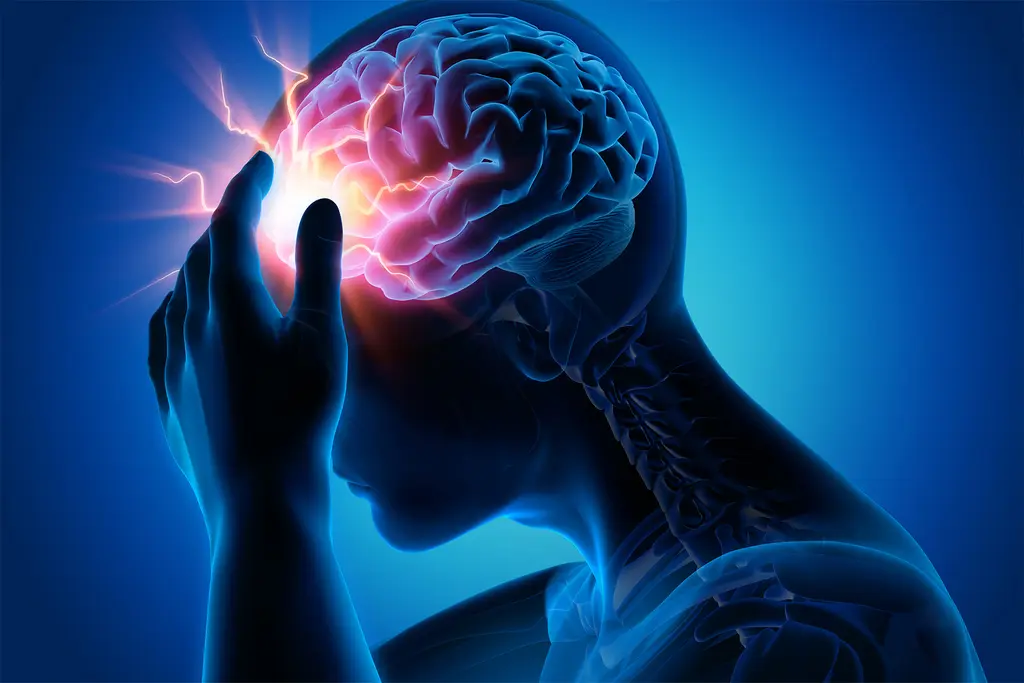
Migraine is a common neurological disorder, especially among women. But only about half of people who have it seek medical care for these intense headaches, and most wait before seeking help from a doctor. Fewer than that leave the doctor’s office with the right diagnosis and a treatment plan that works well.
While lack of access to care is a big a hurdle to managing migraine and one that affects people of color and other underserved groups more often, some experts think gender bias plays a big role in why migraine is so often misdiagnosed, underdiagnosed, and undertreated.
“It’s unfortunately another example of good old misogyny,” says Christopher Gottschalk, MD, a neurologist and director of Yale Medicine’s Head & Facial Pain Center. “It must be that women complaining of pain in their head and can’t function must be lazy, neurotic, or trying to get away with something. It can’t possibly be that they have this (medical) problem.”
No matter your race, ethnicity, or gender identity, it’s key that a medical professional take your head pain seriously. That’s because you might need a prescription for migraine-specific treatments.
How to Talk to Your Doctor About Migraine
Headaches are never a walk in the park. But the disabling nature of migraine sets these attacks apart from other kinds of head pain. Experts agree you should stress this life-altering aspect to your doctor.
“Don’t even use the word headache,” Gottschalk says. “Talk about, ‘These episodes that I have make me unable to function for some number of hours or days on a regular basis. And I can’t live like this.’”
Here are some ways migraine episodes can impact your life beyond head pain:
- You may feel sick to your stomach or throw up.
- Light and sound may bother you.
- You may get fatigued or have trouble thinking clearly.
- Your skin may hurt.
If left untreated, these symptoms can last for several hours or up to a few days. Experiences of brain fog, skin pain, or light sensitivity may linger between attacks, especially if you get headaches a lot.
During a migraine episode, you may not feel well enough to do everyday things. And you’ll want to share with your doctor all the ways in which this impairs your life.
Here are some questions to ask yourself. Share the answers with your doctor:
- Are you often leaving work early or calling in sick a lot?
- Do symptoms affect school or studying?
- Are you unable to care for your family during an attack?
- Do you have trouble being in a bright office?
- Does light from your computer screen or phone bother you?
- Are you also having symptoms of depression or anxiety?
Advocate for Yourself and Educate Your Doctor
Most medical providers know about migraine, but not every doctor specializes in headache medicine. The good news is there are lots of online resources that’ll help you zero in on your head pain and get you closer to the right treatment.
“There’s something called ID Migraine, which is a three-question screen that’s been validated a gazillion times,” Gottschalk says. “That’s the kind of thing where you can find that screen, answer it, and show it to your doctor.”
According to ID Migraine, there’s a very strong chance you have migraine if you answer yes to at least two of the following three questions:
- Has a headache stopped you from doing daily things for at least a day in the last 3 months?
- Do you get nauseated when you have a headache?
- Does light or sound bother you when you have a headache?
You can also go over the POUND mnemonic, or memory aid, with your doctor. Tell them if you have at least four of the following during an attack:
- Pulsating head pain
- One-day duration of headache (4 to 72 hours if untreated or treatment doesn’t work)
- Unilateral (one-sided) headache
- Nausea or vomiting
- Disabling headache
Visit trusted websites to learn more about how to identify migraine symptoms. Some examples are:
- American Headache Society
- National Headache Foundation
- American Migraine Foundation
You’ll also find headache quizzes and info on how to talk to your doctor through groups such as Miles for Migraine, Migraine Again, or the Coalition for Headache and Migraine Patients (CHAMP).
Ask to Try New Treatments
There are a number of medications that target and treat the acute migraine process. These treatments come in pills, shots, nasal sprays, or through a vein in your arm (an IV). You may also benefit from nondrug therapies.
It’s hard to predict which migraine treatment will work best for you. But there are many ways to stop a headache after it starts or lessen your odds of having an attack in the future.
Along with triptans, some newer acute and preventive migraine treatments you can ask your doctor about are:
- Gepants (CGRP blockers)
- Ditans
- Dihydroergotamine (DHE)
- CGRP antagonists
- Neuromodulation devices
You may also benefit from:
- Biofeedback
- Cognitive behavioral therapy
- Lifestyle changes
The goal of acute migraine treatment is to get you back to normal life. With effective acute migraine treatments, that means freedom from headache pain (or close to it) within a couple of hours. Preventive therapy should lessen the number of future attacks. And the ones you do have should be less intense and shorter.
Get a Second Opinion
Let’s say you’ve already talked to your regular doctor about migraine. And, for whatever reason, you aren’t getting the level of treatment you want. The next person you’ll want to see is likely a neurologist.
A neurologist is a doctor who specializes in the diagnosis and treatment of brain and nervous system disorders. And they should be more familiar with the latest migraine drugs and therapies.
Dawn Buse, PhD, is a migraine researcher and clinical professor of neurology at Albert Einstein College of Medicine in New York City. She says most people are well taken care of by their regular doctors. “But there are some people with migraine whose disease may be more complex or severe who would benefit from seeing a neurologist,” she says.
Here are some questions that can help you figure out if a neurologist is right for you:
- Have you already talked to a regular doctor or OB/GYN about your headaches?
- Did your regular doctor give you migraine meds that don’t work well or cause side effects?
- Are you pregnant or want to be and you get a lot of serious headaches?
- Do you get 15 or more headache days a month
- Have you had the “worst headache of your life” or a change in your headache pattern?
What if you’re already seeing a neurologist but still need more complete or advanced care?
“If you want to learn more about the latest in state-of-the-art therapies or combinations of therapies, there are headache expert health care professionals and headache centers around the country,” Buse says. “But there aren’t many, and they are located primarily in large cities.”
Consider going in for a consult once or twice if you want to see a headache expert and they’re not covered by your insurance or they’re far away. Buse says they may be able to create a treatment plan for you that your local neurologist or regular doctor can follow.
Visit the National Headache Foundation or American Migraine Foundation to find a headache doctor or specialist near you.
Show Sources
Photo Credit: Wavebreakmedia Ltd / Getty Images
SOURCES:
Christopher Gottschalk, MD, director, Yale Headache & Facial Pain Center; professor of neurology, Yale School of Medicine.
Dawn Buse, PhD, licensed psychologist; clinical professor, Department of Neurology, Albert Einstein College of Medicine, New York City; board member, American Headache Society.
Frontiers in Neurology: “Giving Researchers a Headache – Sex and Gender Differences in Migraine.”
Annals of Medicine: “A rational approach to migraine diagnosis and management in primary care.”
American Migraine Foundation: “Racial Disparities in Migraine and Headache Care,” “What Is a Headache Specialist? Do I need One? And How Do I find One?” “Find a Doctor.”
Neurology: “Factors Associated With, and Mitigation Strategies for, Health Care Disparities Faced by Patients With Headache Disorders.”
UpToDate: “Patient education: Migraines in adults (Beyond the Basics).”
National Headache Foundation: “Headache Management Tools: ID Migraine,” “Find Certified Providers.”
American Family Physician: “Acute Migraine Headache: Treatment Strategies.”
